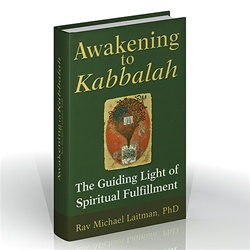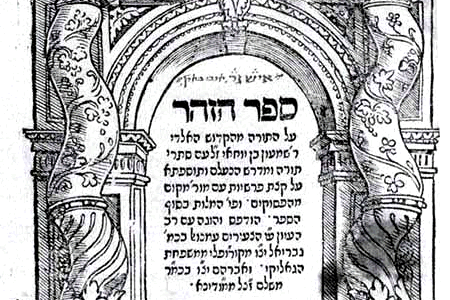Why The Book of Zohar Is So Important for Your Spirituality
Rabbi Shimon Bar-Yochai (Rashbi) was the author of The Book of Zohar, which was written in the second century CE. It is the most important work of Kabbalah and considered to be its primary and most fundamental textbook. Rashbi lived between the Talmudic period and that of The Zohar and is regarded as a great researcher of both human nature and the upper world. He is also among the most important sages of the Talmud (his name is mentioned there some four thousand times). He was proficient in the languages of both the Talmud and Kabbalah, and he used both of them to describe the upper system of management, how the events of the present and the future are made to happen there—all the innovations and transformations—and how they come down from there to our world and manifest themselves in the clothing of this world.
The Zohar explains which actions influence the rest of the world from here below. Rashbi was the first Kabbalist to describe the reactions that we get from above for our thoughts. He described how they operate in the upper world and thus affect the unfolding of future events that are to descend to us. The Zohar is crucial to us because it encircles all the possible circumstances throughout human history.
The Unique Circumstances Behind the Writing of The Zohar
Before Rashbi began to write The Zohar, he established around him a group of disciples, where the soul of each disciple corresponded to a certain spiritual degree in the upper world. There were nine students, and he was the tenth. Together they formed one collective soul, corresponding to the complete structure in the spiritual world called the Eser (ten) Sefirot.
Thus, although Rashbi is the author of the book, each and every one of the students represents one of the attributes of the spiritual world he describes. He built a sort of prism, through which the simple upper light descends to our world and divides into ten parts, which are then divided into ten inner Sefirot. Their story is in fact a description of how those ten spiritual properties or forces come upon our world and lead it and how each person can use these forces for his or her own benefit and for others.
Why The Zohar Is Often Misunderstood
Rashbi said he could not have written the book by himself. He was supposed to write the book for the last generations and, in the meantime, conceal it so that it would only be revealed in the 16th century. To write this book in such a way that the intermediary generations would pass it by, he used his disciple Rabbi Abba. Rabbi Abba began writing the book while hearing and studying it from his teacher, but he wrote it in such a way that those who read it perceive only the outermost layer of the book.
The Zohar was concealed while Rabbi Shimon was still alive, right after the writing was completed. Humanity as a whole, and especially the Jewish people, were not at the spiritual degree that would have allowed them to use the book for a spiritual purpose and for the good of all humankind.
The Fascinating Story Behind Why The Zohar Was Hidden from the Public
The Torah also speaks only of spiritual worlds, but it has spread so well throughout the world precisely because it was written so that everyone can understand it at his or her corporeal level and adhere to what it says. Moses referred to spiritual laws, but he did it so that those who adhered to those laws would direct the entire illumination of the universe on him- or herself in the best possible way. Because of the coded and “simple” way the Torah was written (“simple” because when we read it, we think that it is simple and clear), the Torah didn’t have to be concealed like The Zohar, and could remain out in the open and not handed over secretly from one Kabbalist to another.
Rabbi Shimon ordered The Zohar buried in his lifetime. In fact, he both wrote it and concealed it. Today, many parts of The Zohar are still missing. Five or six hundred years later, the book was found by chance: a Kabbalist asked one of his students to get some food from the market. The student returned with food wrapped in paper. The Kabbalist was astonished to see that the wrapping was an ancient manuscript.
The Kabbalist began to study it and saw that it led to the secrets of creation. He immediately sent his students back to the market. They burrowed in every pile of trash and gathered all the pages they could find, eventually ending up with more than 2,700 pieces of paper.
The Zohar Opens Up the Spiritual Reality to a Person
The Kabbalist Moshe De Leon was the first to publish The Zohar in 13th century Spain. It contained not only commentaries on the Torah, but commentaries on other books as well, such as the books of the prophets and Kabbalistic explanations to the Mishnah and the Talmud. Therefore, what we now refer to as The Zohar is only a part of the original book. It is not a large book today, containing approximately three hundred pages of text, and is about twenty times smaller than the original size, meaning that a huge amount of information is still missing. However, this is not so great a loss, because new Kabbalists have come along and told us about everything that happens in the two worlds and how the upper world affects our own, building today and tomorrow. Except for the interpretation of Moses’s five books of the Pentateuch, almost nothing else remained. However, even in its present form, it remains a key by which we can open the gates to the spiritual world.
 “The One Book that Everyone Interested in Spirituality Should Read” is based on the book, Awakening to Kabbalah: The Guiding Light of Spiritual Fulfillment by Dr. Michael Laitman.
“The One Book that Everyone Interested in Spirituality Should Read” is based on the book, Awakening to Kabbalah: The Guiding Light of Spiritual Fulfillment by Dr. Michael Laitman.
![]() Start Your Kabbalah Studies Here: Take a Free Kabbalah Course »
Start Your Kabbalah Studies Here: Take a Free Kabbalah Course »

